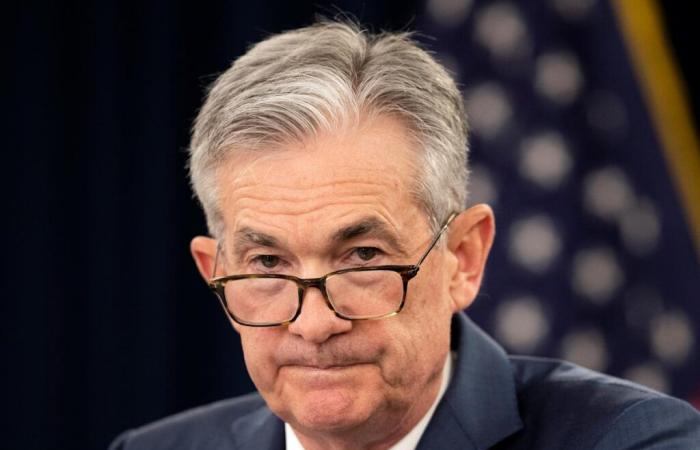
Washington (AP) – The Federal Reserve kept its key interest rate unchanged on Wednesday, dismissing President Donald Trump’s demands to reduce loan costs, and said that the risks of greater unemployment and greater inflation have increased.
The Fed held its rate at 4.3% per third consecutive meeting, after having reduced it three times in a row at the end of last year. Many Wall Street economists and investors still expect the FED to reduce rates two or three times this year, but Trump tariffs have injected a huge amount of uncertainty in the United States economy and Fed’s policies.
It is unusual for the FED to say that the risk of higher and more unemployment has increased. But economists say that is the threat created by Trump’s tariffs. Import taxes could raise inflation by more expensive parts and products, while increasing unemployment by making companies cut jobs as their costs increase.
As a result, tariffs have put the Fed in a difficult position. The Fed objectives are to keep stable prices and maximize employment. Typically, when inflation rises, Fed increases rates to curb loans and spending and cool inflation, while if layoffs increase, it would reduce rates to stimulate more expense and growth.
The president of the FED, Jerome Powell, and other bank officials have indicated that they want to see how tariffs – including 145% in all imports from China – impact consumer prices and economy.
The caution of the Central Bank could lead to more conflicts between the Fed and the Trump administration. On Sunday, Trump again urged Fed to cut the rates in a television interview and said Powell “I just don’t like it because I think it’s a very rigid guy.” With inflation not far from the 2% objective of the Fed for now, Trump and Treasury Secretary Scott Besent argue that the Fed could reduce its rate. The Fed raised it in 2022 and 2023 to combat inflation.
If the Fed cut, it could reduce other loan costs, such as mortgages, loans for cars and credit cards, although that is not guaranteed.
Trump also said he would not fire Powell because the president’s mandate ends next May and may appoint a new president then. However, if the economy stumbles in the coming months, Trump could renew its threats to dismiss Powell.
A big problem facing Fed is how tariffs will impact inflation. Almost all Economists and Fed officials expect prices to raise, but it is not clear how much or for how long. Tariffs typically cause a unique increase in prices, but not necessarily continuous inflation. However, if Trump announces more tariffs – as he has threatened to do in pharmaceutical products, semiconductors and copper – or if Americans fear that inflation will get worse, that could make prices rise more persistently.
Kathy Bostjancic, chief economist of Nationwide, said this could keep Fed aside until September.
“It’s hard for them to cut before because they have to weigh, what is the impact of inflation?” Bostjancic said. “Is this going to be persistent and add inflation expectations?”
Economists and Fed are closely observing inflation expectations, which are essentially a measure of how much consumers worry that inflation gets worse. The higher inflation expectations can be a self -fulfilling prophecy, because if Americans think prices will rise, they can take measures that increase costs, such as asking for higher wages.
For now, the United States economy is mostly in good shape, and inflation has cooled considerably since its peak in 2022. Consumers are spending at a healthy pace, although part of that can reflect the purchase of things like cars before tariffs. Companies are still adding workers at a constant pace, and unemployment is low.
-Even so, there are signs that inflation will worsen in the coming months. Manufacturing and service companies surveys show that they are seeing higher prices of their suppliers. And a survey of the Dallas branch of the Federal Reserve found that almost 55% of manufacturing companies hope to transfer the impact of tariff increases to their customers.
“The conclusion is that inflation will increase significantly in the next six months,” said Torsten Slok, chief economist of the Apollo group, in an email.
However, tariffs could also weigh a lot in the economy, particularly due to the uncertainty they have created. The huge tariffs on approximately 60 other nations, announced on April 2, were then postponed until July 9, but could be reimposed. Business surveys show that companies are postponing investment decisions until they have greater clarity.
Ryan Sweet, head economist of the United States in Oxford Economics, said that uncertainty about commercial policy gives “night terrors.”
“The economy of uncertainty is absolutely suffocating,” Sweet said. “Companies that do not know the rules of the game, their instinctive reaction is to stay with crossed arms. And that is what they are doing.”
But if the uncertainty delays hiring, slows down the economy and increases the unemployment rate, the Fed could quickly change to interest rate cuts. A strong economic slowdown could eventually cool inflation by itself, economists say.
“If you felt that the economy is really slowing down, then I think that would probably take precedence (about inflation), because generally the way in which the committee thinks is that this will also drag some inflation with it,” said Jim Bullard, former president of the San Luis de la Federal Reserve branch, and currently Dean of the Business School of the University of Purdue.
In March, the Fed said it could cut the rates twice this year. But since then, the Trump administration imposed tariffs that Powell said last month were larger and broader than the Fed expected.
The tariffs, Powell acknowledged, could both slow down and raise prices, which puts the Fed in a difficult situation. It would usually reduce rates to boost growth and hiring, while increasing them to cool spending and inflation.
The Fed could reduce rates preventively to help prevent deceleration. But with tariffs such in force, Powell has pointed out that Fed wants to see how they affect inflation before taking any measure.
“Without price stability, we cannot achieve long periods of solid conditions of the labor market that benefit all Americans,” said Powell.
___________________________________
This story was translated from English by an AP editor with the help of a generative artificial intelligence tool.





